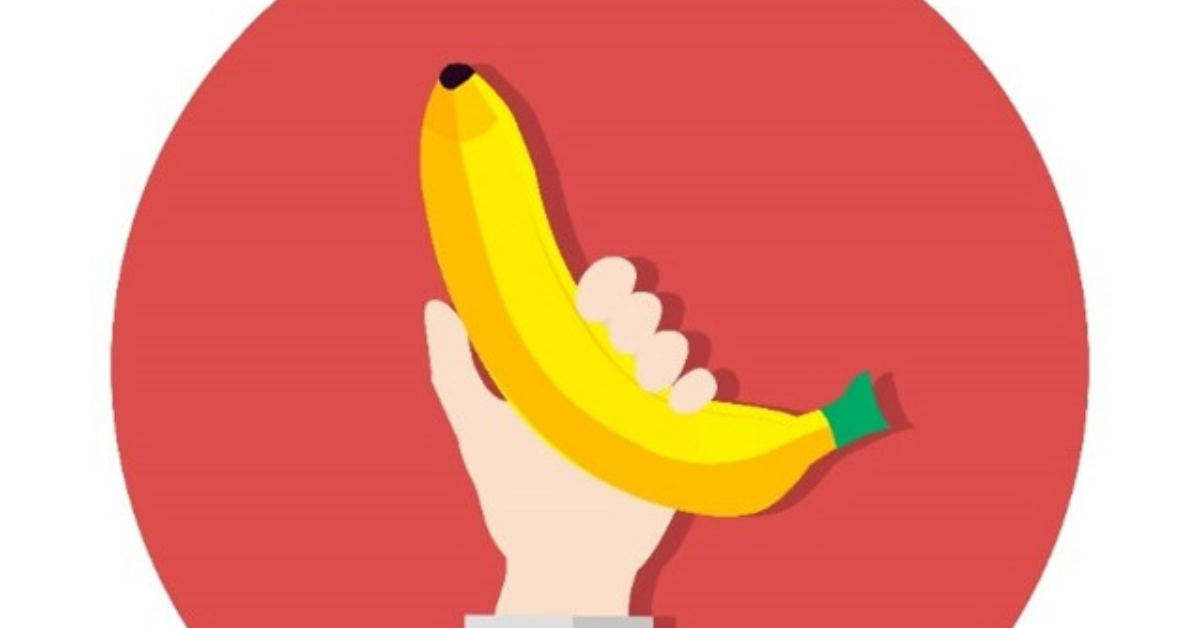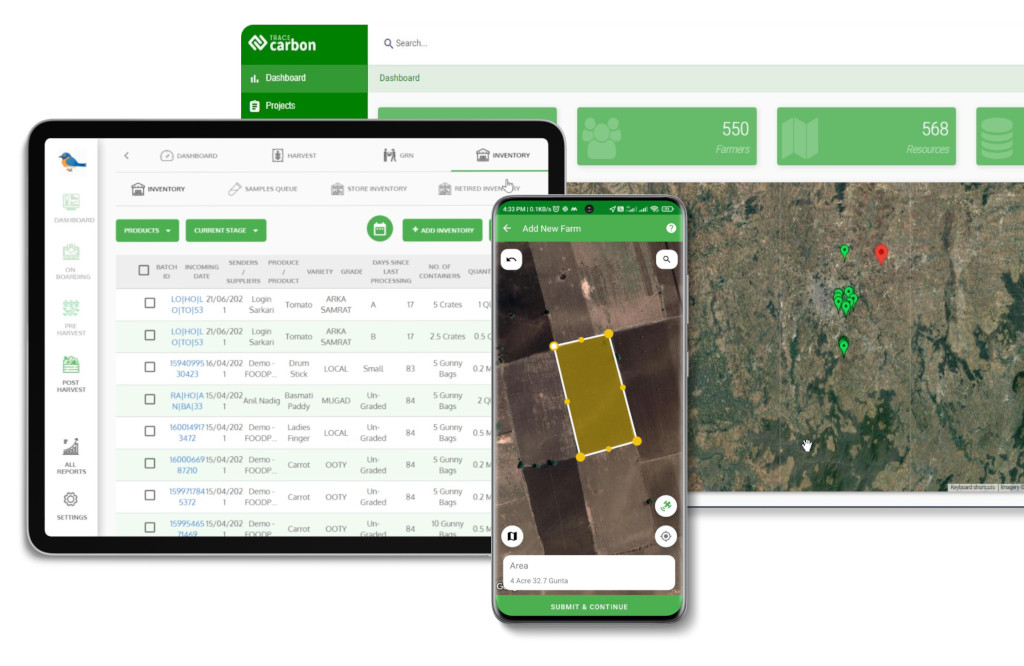Contact: +91 99725 24322 |
Menu
Menu
Quick summary: Learn how traceability in the banana supply chain helps you meet compliance, reduce recalls, and win buyer trust. Discover smart tools to digitize sourcing from farm to port—faster and more reliably.

Ever wonder why the humble banana keeps making headlines? From pesticide residue controversies to labor rights violations, the banana supply chain has become one of the most closely scrutinized in global agriculture. And for good reason—it’s vast, complex, and often lacking transparency at critical points.
Most banana exporters, distributors, and retailers still rely on fragmented or manual tracking methods. The result? Disconnected data, delayed reactions, increased spoilage, and growing pressure from regulators and consumers alike. Without end-to-end traceability in the banana supply chain, proving compliance, sustainability, or even basic safety becomes nearly impossible. If you’re sourcing bananas across borders or managing quality from farm to shelf, it’s no longer enough to know where your fruit should have come from. You need traceability you can prove—digitally, in real time.
Key Takeaways
Bananas are one of the most widely traded and consumed fruits in the world, with a global market valued at over $25 billion annually. As a staple export for countries like Ecuador, the Philippines, Colombia, and India, bananas travel across complex international supply chains before reaching retail shelves. Yet despite their ubiquity, the banana market faces mounting pressure—from climate volatility, labor rights concerns, and increasingly strict sustainability regulations. With most production driven by smallholder farmers and a high level of perishability, the banana market is uniquely vulnerable to disruptions—and uniquely positioned to benefit from digital traceability innovations that build trust and reduce risk.
When you’re moving thousands of tons of bananas across borders, things get messy. Batches get mixed. Records get misplaced. And when something goes wrong, everyone scrambles to trace it back… only to realize the trail went cold at the farm gate. In simple terms, traceability in the banana supply chain is the ability to track every banana (or batch of bananas) from the exact plot of land where it was grown, all the way to the shelf where it’s sold—or the container where it’s exported. It’s about knowing where your product came from, who handled it, when it moved, and how it was processed. But it’s not just about looking backwards when there’s a problem—it’s also about building confidence forwards.
If you’re trying to stay compliant and meet organic certification audits, or satisfy a global buyer’s procurement checklist, these questions are no longer optional—they’re deal-breakers.
Real searches your buyers make:
“How do I trace banana origin for exports?”
“What is batch-level traceability for bananas?”
“How do I meet traceability compliance for fresh produce?”
Whether you’re exporting bananas, sourcing from smallholders, or supplying global retailers, the pressure is rising from all sides: regulators, consumers, and buyers. The banana supply chain has reached a pivotal moment where proving your claims is just as important as making them.
On the U.S. side, FSMA 204 is tightening food traceability rules, requiring faster access to detailed records during investigations or recalls. Organic and fair-trade certifications are doubling down on audits, expecting digital documentation trails, not handwritten logs.
“How do we survive an audit without turning operations upside down?”
The answer? Digitized, batch-level traceability systems that can generate reports in seconds.
Today’s buyers—especially in Europe and North America—don’t just care that a banana is organic or fair-trade. They want to know:
This shift isn’t just ethical—it’s economic. Retailers and brands are paying premiums for suppliers who can provide verifiable stories behind their produce.
Global retailers like Carrefour, Walmart, and Lidl are turning traceability into a vendor requirement. If you can’t prove your supply chain with digital records, you’re at risk of delisting or delayed approvals.
What used to be a competitive advantage is now a minimum expectation.
What this means for exporters:
You’re not just shipping bananas—you’re shipping data, proof, and compliance with every box.
Banana exporters and procurement teams today are navigating more than just logistics—they’re managing rising regulatory pressure, tighter buyer expectations, and increasing scrutiny on sourcing practices. Their top priority? Staying compliant and competitive without disrupting operations.
One of the first questions they ask is, “How do I prove the origin of every shipment?” With digital traceability systems in place, they can link each banana batch directly to plot-level GPS data, backed by harvest and farmer documentation—making FSMA, and organic audits smoother and faster.
Next comes the concern about risk: “What if I need to isolate a bad batch?” Traditional tracking systems often delay action. But with backward traceability, teams can quickly trace issues from the shipment all the way back to the farm and lot number, minimizing financial losses and avoiding blanket recalls.
And in a market where ethics and transparency drive purchasing decisions, the big question remains: “How do I prove this was responsibly sourced?” A digitally timestamped trail from planting to export not only validates sustainability claims—it builds buyer confidence and brand equity.
Simply put, traceability is no longer a backend feature. For banana exporters, it’s a strategic business enabler. Traceability in the banana supply chain is no longer just about visibility—it’s about verifiability. The more transparent your data, the more resilient your business.
If you work in banana exports or procurement, you already know—it’s one thing to move bananas, it’s another to trace them.
The banana supply chain is uniquely difficult. It’s fast, fragmented, and fragile. And yet, you’re expected to produce precise, plot-level traceability for every box. That’s a tough ask when you’re dealing with thousands of farmers, dozens of containers, and the ticking clock of perishability.
Let’s break down the challenges most banana supply chain teams are quietly struggling with:
Bananas don’t wait. Once harvested, the clock starts ticking—temperature control, transport delays, and warehouse efficiency all become mission-critical. But when traceability data is buried in paper slips or WhatsApp groups, you’re flying blind.
“How do I track bananas from harvest to port without adding delays?”
Digital batch tagging and real-time data capture on mobile devices, even offline.
Most bananas are grown by smallholder farmers with limited access to tech, connectivity, or digital records. You might have one exporter working with 1,500 farmers—some of whom don’t have official land titles or even smartphones.
“Can you prove this banana was sustainably and legally grown?”
Exporters think:
“How do I do that when half my farmers aren’t even mapped?”
This is where GPS-based farmer onboarding + offline mobile tools change the game.
Many banana batches are aggregated in silos, containers, or cold rooms—making it hard to say exactly which farm contributed to which box. Add handwritten records and manual grading sheets, and suddenly your “traceability” turns into detective work.
“How do I show a clear audit trail without full segregation?”
Regulators expect: Declaration of origin with geolocation, not guesstimates.
This is why aggregated traceability + blockchain-backed batch IDs are so powerful—they make mixed sourcing audit-ready.
These aren’t just operational gaps—they’re growth blockers. And they’re exactly what digital traceability platforms like TraceX are built to solve.
Want to see how other banana exporters are overcoming these same hurdles?
Read the case study
If your banana traceability still lives in notebooks and spreadsheets, you’re not alone. But you’re also not audit-ready, scalable, or able to give buyers the real-time visibility they increasingly demand.
Exporters and procurement teams don’t want more complexity—they want more clarity. Their goal?
But the big question is:
“How do I track a banana from the farm to the container… without slowing down my operations?”
No traceability can start without the source.
Field agents or cooperatives use a mobile app to:
Once bananas are harvested, they’re logged with:
This data creates the first digital footprint of the banana, ensuring nothing is lost in translation between farm and packhouse.
“How do I digitize harvest without overwhelming field staff?”
Keep it mobile-first, user-friendly, and offline-capable.
Bananas are rarely shipped as single-farm lots—they’re batched.
A digital system creates traceable batch IDs and links them to:
Even in a mixed batch, you can still prove:
“How do I trace blended bananas?”
Use aggregated traceability with batch-level plot data.
Every point of contact is logged—from cold storage to packhouse to port:
This is where most traceability systems break down—but digital time-stamps ensure every event is accounted for.
“How do I prove cold chain compliance or reduce loss in transit?”
Have a real-time digital trail for every stop.
Once your bananas are packed and ready to move, your traceability journey becomes a story:
Your buyer scans the code and sees:
“Can I show traceability without 100-page reports?”
Yes—let your data tell the story for you.
The carbon footprint in banana production refers to the total greenhouse gas (GHG) emissions generated throughout the banana’s lifecycle—from cultivation to harvest, packaging, transport, and retail. Most emissions come from synthetic fertilizer use, inefficient irrigation, fuel-based machinery, and long-distance refrigerated transport (especially via ships and trucks). In some regions, deforestation to expand banana plantations further increases carbon impact. Additionally, post-harvest processes like plastic packaging and cold storage contribute significantly. Measuring and reducing this footprint is essential not just for meeting sustainability commitments but also for complying with growing climate regulations and buyer expectations. By adopting climate-smart farming, optimizing logistics, and tracking emissions, producers can reduce their footprint and boost market access—especially in eco-conscious export markets.

When you’re managing thousands of tons of bananas, dozens of sourcing zones, and strict compliance deadlines, manual processes just don’t cut it anymore. That’s why TraceX exists—to help you transform complexity into clarity.
Here’s how our Traceability platform makes traceability seamless, scalable, and regulation-ready:
Everything starts at the root—literally.
With TraceX, field agents or cooperative leads can map every farmer’s plot using a simple mobile app:

Think of crop configuration as building a digital blueprint for banana farming:
This standardizes how banana farming is documented across smallholders, regions, and seasons—giving you consistent, audit-friendly records. With TraceX, PoPs can be digitized, shared with field agents, and even linked to traceability dashboards. That means you don’t just know where a banana came from—you know how it was grown.

As bananas are harvested, each activity is logged digitally:
Even when bananas are blended at packhouses or warehouses, TraceX maintains full backward traceability. So if a shipment is flagged, you can instantly trace it back to the exact contributing farms.
“How do I reduce losses, delays, and rejections?”
You track and trace every move—before a problem becomes a crisis.
The final step? Making all this data accessible, verifiable, and buyer-friendly.
With TraceX, each batch or box of bananas gets a unique QR code. When scanned, it reveals:
Buyers, regulators, and even end consumers can instantly verify the journey—from plot to port.

“Can my bananas tell a story buyers actually care about?”
Yes—with TraceX, every shipment speaks for itself.
In today’s climate of rising compliance demands, consumer scrutiny, and global supply chain risks, banana traceability is no longer optional—it’s essential. Whether you’re an exporter navigating EUDR, a procurement head dealing with mixed batches, or a sustainability lead aiming to prove impact, end-to-end traceability helps you do it all—with speed, accuracy, and credibility.
By digitizing your banana supply chain with the right tools—like geo-mapping, batch-level tracking, and QR-coded proof—you gain more than transparency. You gain resilience, trust, and a serious edge in a competitive market.
Banana supply chain traceability is the ability to track every banana—batch or box—through each stage of its journey, from the farm where it was grown to the port where it is shipped, and beyond. It involves capturing and connecting data on farming practices, harvest dates, handling, transport, and storage, all linked to the specific plots and farmers involved.
To trace banana batches from farm to port, you need to:
All of these are available in one integrated platform with TraceX, purpose-built for food and agri value chains like bananas. To digitize banana sourcing effectively, you’ll need:
